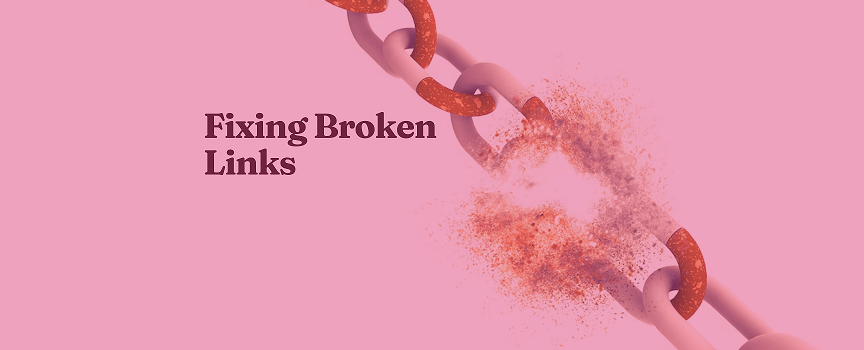The Ultimate Guide to Fixing Broken Links on Your Website

Table of Contents
Maintaining a healthy website is important for any small business owner, website administrator, or digital marketer. One key aspect of website maintenance is managing broken links, which can significantly impact your site’s performance and user experience. This guide will teach you how to identify, fix, and prevent broken links, ensuring your website remains in top shape.
Identifying Broken Links
The first step in managing broken links is identifying them. Fortunately, several online tools can help you with this task:
- Google Search Console
- Broken Link Checker
- Screaming Frog SEO Spider
Regular link checks are essential for maintaining a smooth user experience and optimising your SEO. Ensuring all links work correctly helps keep visitors engaged and reduces bounce rates, boosting your site’s ranking with SEO best practices for broken links.

Broken Links Impact
Broken links can have a detrimental effect on your website:
- User Trust: Visitors encountering broken links may lose trust in your site, thinking it needs to be updated or better maintained.
- Search Engine Rankings: Search engines like Google penalise sites with broken links, reducing their visibility in search results.
- Site Traffic: Reduced user trust and lower search engine rankings can significantly reduce site traffic.
Broken links can cost businesses revenue and damage their credibility. Addressing these issues promptly is crucial for maintaining a positive online presence.
Fixing Broken Links
Once you’ve identified broken links, it’s time to fix them. Follow these steps:
- Update the Link: If the content still exists but has moved, update the URL to the correct address.
- Remove the Link: If the content no longer exists, remove the link from your site.
- Create a Custom 404 Error Page: A well-designed 404 page can guide users to your site and improve navigation.
You can enhance user experience and improve your site’s SEO by fixing broken links.
Also Read
- The Importance of Regular Website Backups
- How to Conduct a Detailed SEO Audit for Your Website – Complete Guide
- What Are Backlinks in SEO & Why Do They Matter in SEO Rankings?
The Importance of Regular Website Backups
Regular website backups are essential for restoring broken links and other site issues. Backups allow you to quickly recover from errors, ensuring minimal disruption to your site. Additionally, having a backup system in place offers SEO benefits by maintaining the integrity of your site.
Preventing Future Broken Links
Preventing broken links is just as important as fixing them. Here are some strategies:
- Use Relative Links: When moving content, use relative links instead of absolute URLs to reduce the chance of broken links.
- Automated Link Checkers: Utilize tools that automatically check for broken links and alert you to any issues.
- Regular Site Maintenance: Schedule regular maintenance checks to ensure all links function correctly.
Implementing these strategies can help you maintain a healthy website and avoid the pitfalls of broken links.
Conclusion
A well-maintained website is vital for businesses of all sizes. By identifying, fixing, and preventing broken links, you can enhance user experience, boost your SEO, and maintain your site’s credibility. We encourage you to implement these solutions to keep your website in top condition and ensure a seamless online experience for your visitors. Ready to take your website maintenance to the next level? Start by fixing those broken links and watch your site’s performance improve!
